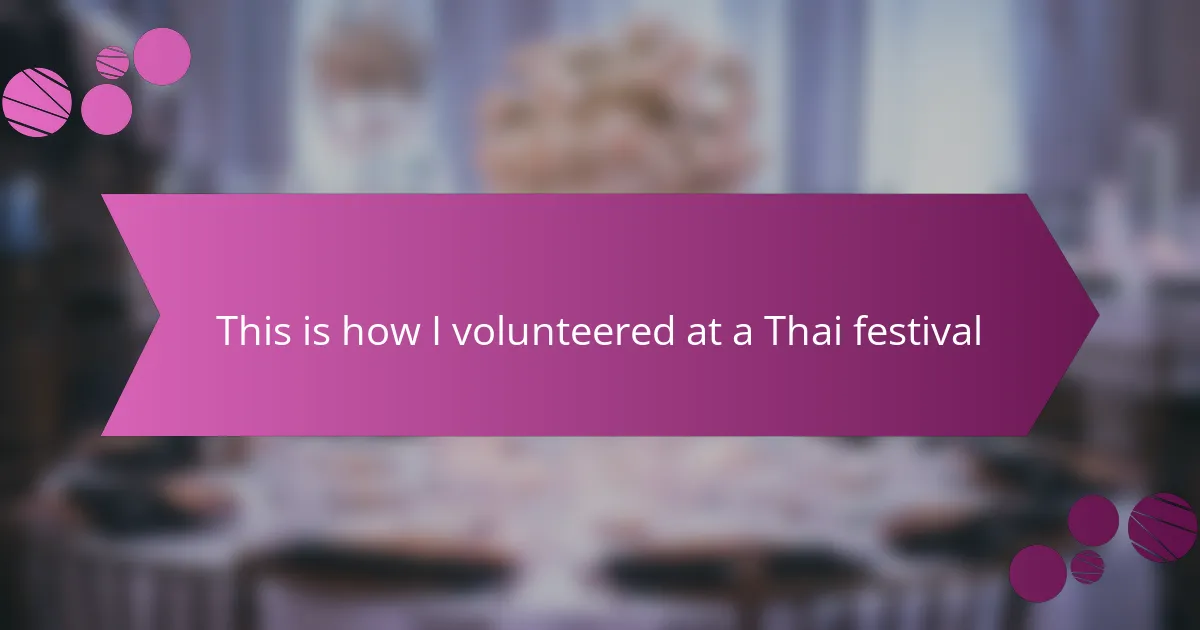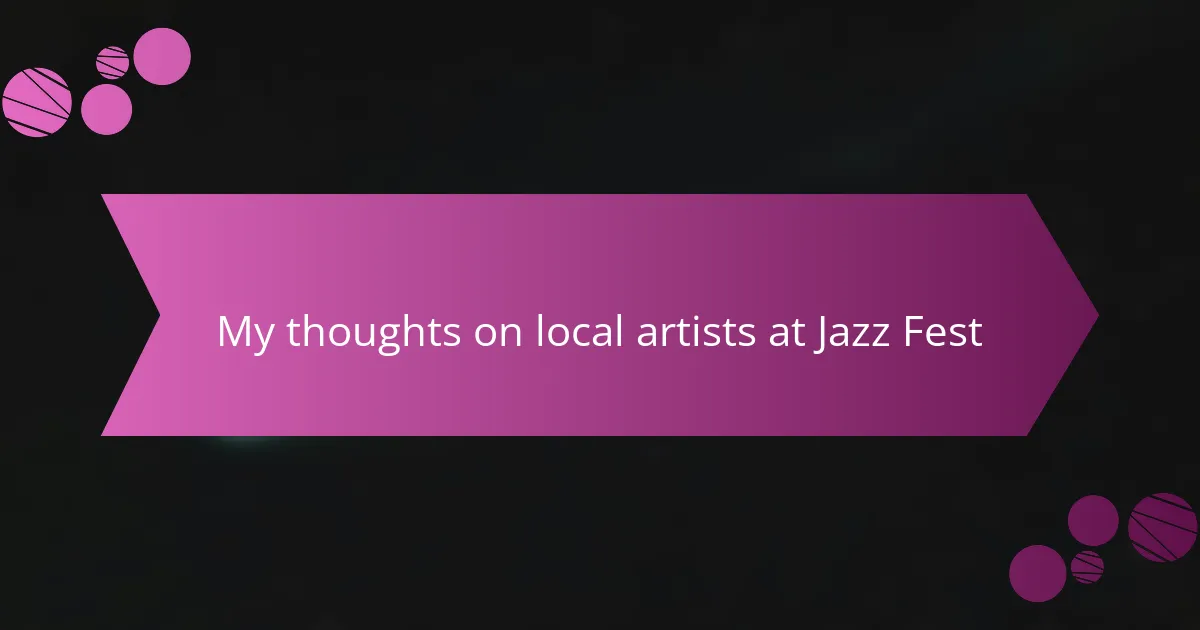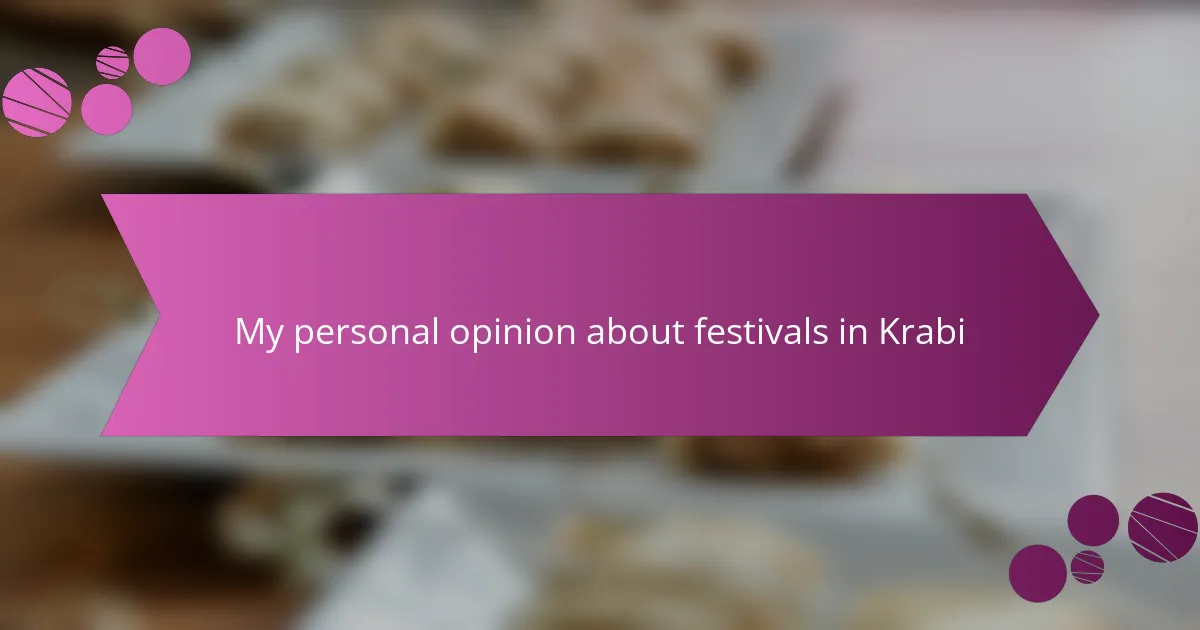Key takeaways
- Thai music festivals blend traditional and contemporary styles, enhancing cultural appreciation and community connections.
- Collaboration among local artists fosters artistic diversity, emotional connections, and supports the local economy.
- Effective planning for collaborative events prioritizes communication, artist input, and community engagement, leading to memorable experiences.
- Showcasing local talent creates intimate community connections, offering unique sounds while supporting the local economy.

Understanding Thai Music Festivals
Thai music festivals are vibrant celebrations of culture, tradition, and artistry. I remember attending my first festival and being enveloped by the pulsating rhythms and colorful performances. The energy was contagious, as local artists showcased not only their musical talents but also their unique stories through their art.
These festivals often serve as a platform for collaboration among artists, creating an incredible blend of traditional Thai music with contemporary influences. I once partnered with local musicians, and it was fascinating to witness how our different styles harmonized beautifully, creating a fresh yet authentic sound that resonated with the audience.
Participating in these events not only deepened my appreciation for Thai music but also fostered connections that transcended cultural boundaries. Each interaction with a local artist opened up new perspectives, enriching my experience and making every festival memorable.
| Festival Type | Characteristics |
|---|---|
| Traditional Festivals | Focus on classical Thai music and traditional styles. |
| Contemporary Festivals | Incorporate modern genres and fusion styles. |
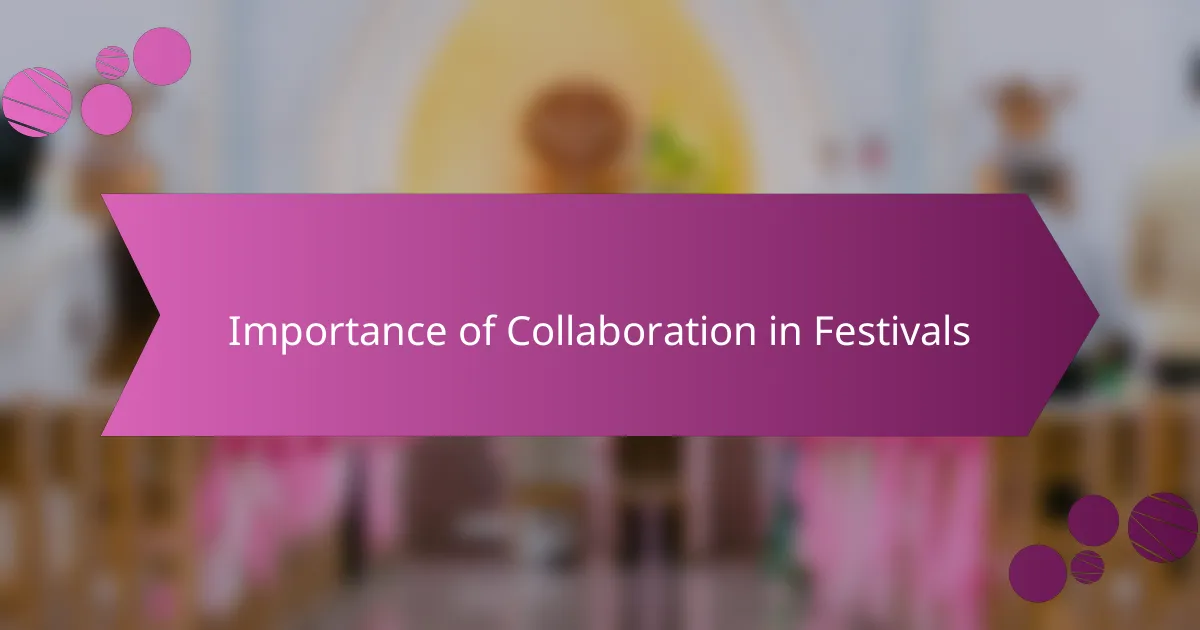
Importance of Collaboration in Festivals
Collaboration in festivals, especially in the context of music, is crucial for creating a rich, diverse experience. When I worked alongside local artists at the Thai music festival, I saw first-hand how blending different styles and cultures elevates the atmosphere. Each artist brought their unique flair, fostering a sense of community that was palpable and infectious.
In my experience, these partnerships not only enhance the festival’s artistic value but also promote local talent. I remember connecting with an emerging Thai musician who shared stories of their roots and inspirations, and that personal touch resonated with the audience, creating a deeper emotional connection.
With collaboration, we create opportunities for creativity and experimentation that can lead to magical moments. It’s about sharing stories and traditions through music, which ultimately cultivates a sense of belonging among attendees.
| Aspect | Collaboration |
|---|---|
| Community Engagement | Stronger local involvement |
| Artistic Diversity | Increased variety of performances |
| Cultural Exchange | Sharing of different traditions and styles |
| Emotional Connection | Deeper bonds with the audience |
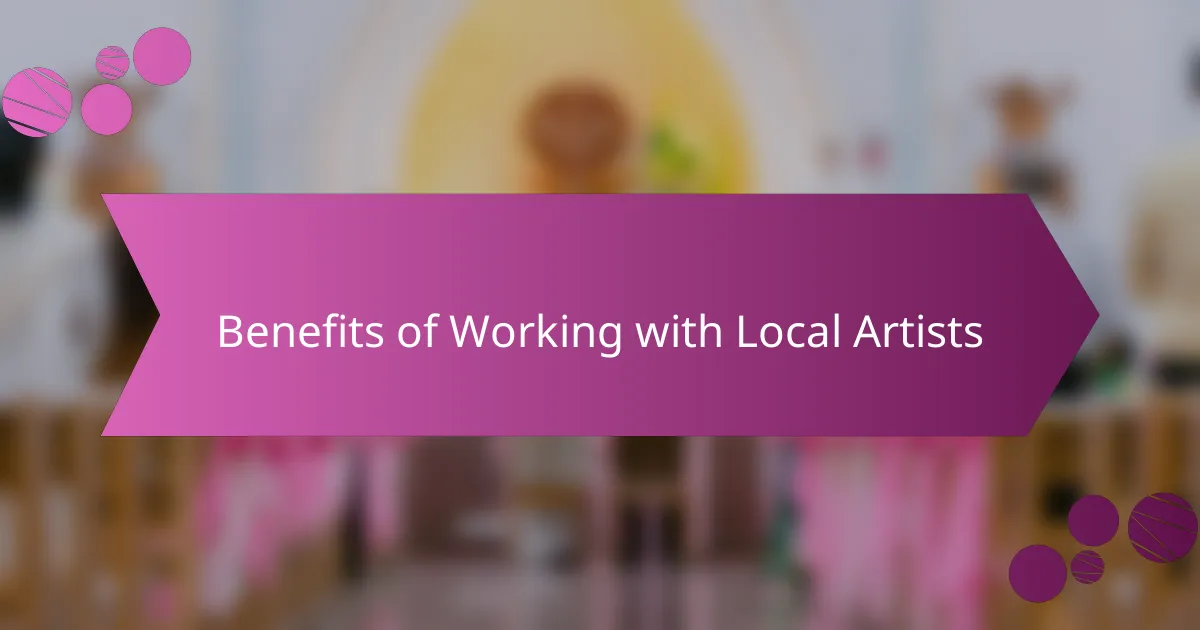
Benefits of Working with Local Artists
Collaborating with local artists has brought a vibrant energy to our Thai music festival that is hard to replicate. For instance, when we worked with a local musician from Chiang Mai, their unique blend of traditional Thai melodies and contemporary sounds created a captivating fusion that resonated deeply with the audience. This connection not only amplified the authenticity of the festival but also fostered a sense of community pride among the performers and attendees alike.
Furthermore, partnering with local talent allows us to support the local economy and empower these artists to showcase their work on a larger stage. I remember seeing the joy on a young artist’s face when her song was performed live for the first time—moments like these are invaluable and remind us why we pursue these collaborations in the first place.
| Benefit | Description |
|---|---|
| Authenticity | Local artists bring genuine cultural expression that enhances the festival experience. |
| Community Engagement | Working with local talent fosters a sense of pride and ownership within the community. |
| Economic Support | Collaborations directly benefit the local economy by providing exposure and opportunities for local artists. |

Finding Local Artists for Collaboration
Finding local artists for collaboration was both exciting and a bit daunting. I started by attending small gigs and local art fairs, where I was amazed at the talent that flourished in the community. I approached artists who resonated with the spirit of the festival, focusing on those whose music conveyed stories reflective of Thai culture.
I truly believe in the power of connections. One evening, I met a remarkable traditional musician at a local café, whose interpretation of classic Thai melodies left me captivated. We struck up a friendship that blossomed into a beautiful collaborative project for the festival. The emotional journey of blending our different musical backgrounds made the experience even more rewarding.
The biggest realization I had was that collaboration is not just about merging styles; it’s about sharing a vision. Each artist brings their unique energy and perspective, creating something extraordinary together. I found that the more I engaged with the community, the more authentic my collaborations became.
| Aspect | My Experience |
|---|---|
| Approach | Attended local gigs and art fairs |
| Connection | Fostered relationships through shared experiences |
| Outcome | Created meaningful collaborative projects |
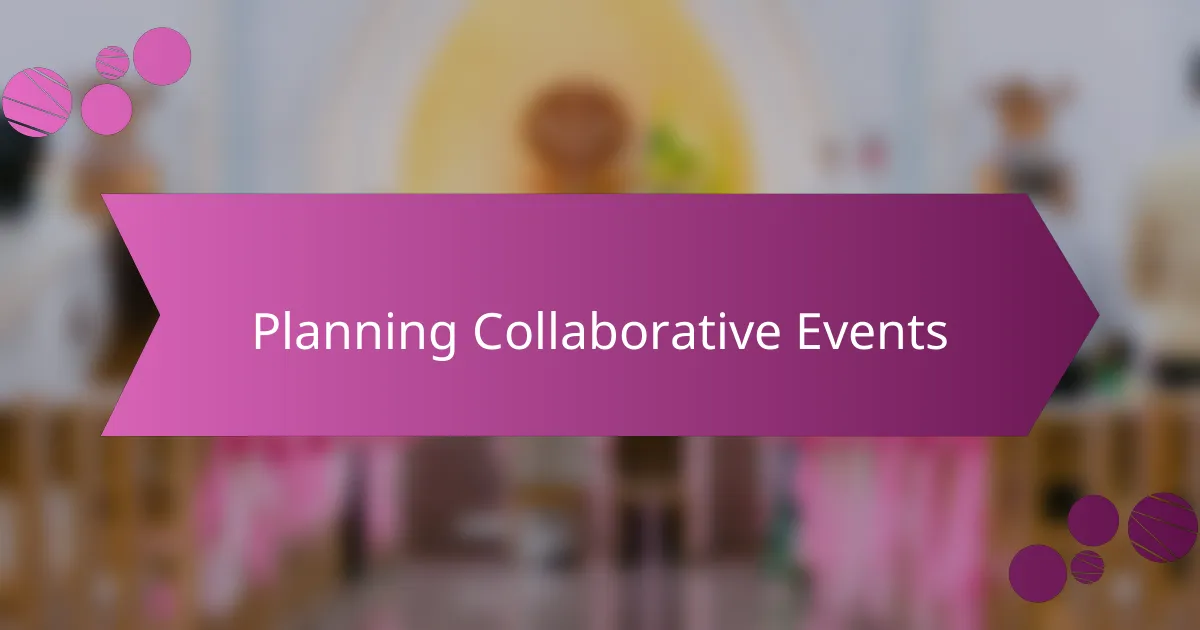
Planning Collaborative Events
When it comes to planning collaborative events, I’ve found that communication is the cornerstone of success. Reaching out to local artists involves understanding their vision and blending it with the festival’s goals. For example, I remember the excitement I felt when a local band suggested incorporating traditional Thai instruments into their set, creating a unique sound that truly resonated with festival-goers.
A solid timeline is also crucial. I put together a schedule that allowed for ample rehearsal time, which not only enhanced the performances but also fostered deeper connections among the artists. In my experience, these collaborative efforts lead to unforgettable moments and a shared sense of community that enriches both the performers and the audience.
Here’s a quick comparison of different approaches to collaborative event planning:
| Aspect | Traditional Approach | Collaborative Approach |
|---|---|---|
| Artist Involvement | Minimal input from artists | Active participation in decision-making |
| Creative Freedom | Often limited | Encouraged and cultivated |
| Community Engagement | Less focus on local culture | Strong emphasis on local heritage |
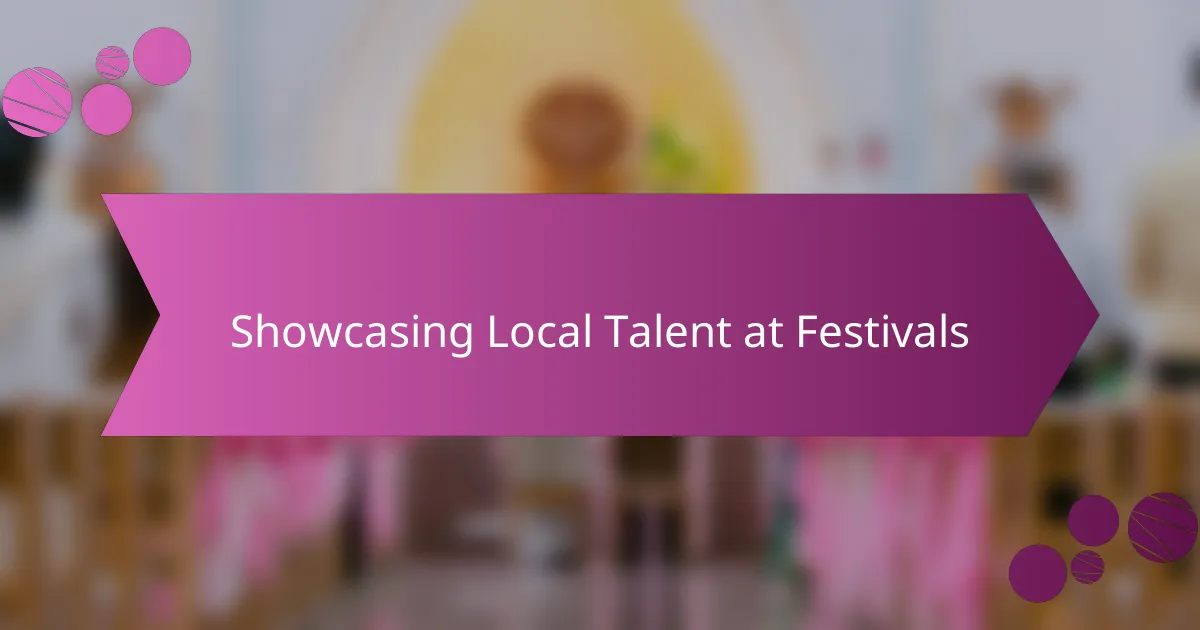
Showcasing Local Talent at Festivals
Showcasing local talent at festivals is an exhilarating experience. I remember the first time I collaborated with emerging artists. It was truly heartwarming to see their eyes light up as they took the stage, sharing their unique stories and sound that resonated with the audience.
One of the most rewarding aspects of this collaboration has been witnessing the local community unite through music. The passion these artists bring is palpable, and it creates a vibrant atmosphere where everyone feels connected. It’s not just about the music; it’s about building relationships and fostering creativity within our local culture.
Here’s a comparison table highlighting some key aspects of showcasing local talent versus international acts at festivals:
| Aspect | Local Talent | International Acts |
|---|---|---|
| Community Connection | Deep and intimate | Variable, often distant |
| Cost | Lower, supports local economy | Higher, can strain budgets |
| Unique Sound | Original and rooted | Polished but sometimes generic |

